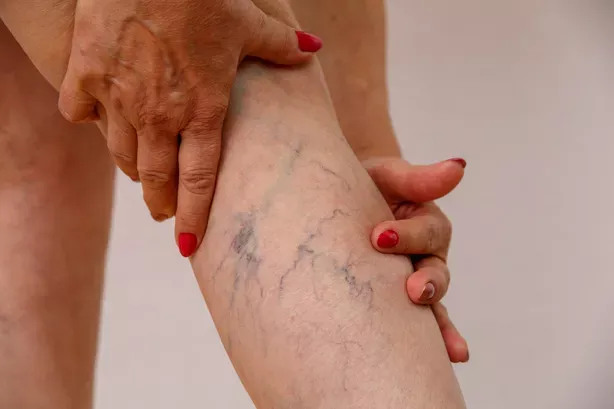Vein Pain in the Leg - Causes and Treatments

Low-grade aching in the leg is a common symptom of vein problems. It can happen at any time of day, but it usually occurs after you've been on your feet for a long time. Some people experience leg cramps or restlessness as well. Whether it's a constant ache or sudden pain, vein pain in the leg can be highly distressing.
Varicose veins
A variety of causes may cause varicose veins in the leg. They may cause throbbing and aching pain in the legs, and they can also cause ulcers in the veins. They can also be indicative of phlebitis, an infection of the veins. Fortunately, there are several treatments for varicose veins in the leg.
Sclerotherapy, which uses a chemical to close off a varicose vein, is a standard treatment. This procedure is performed under general anaesthesia. During the procedure, a small chemical is injected into the vein. The chemical then irritates the inside of the vein and closes it off. Patients will typically need several sessions of sclerotherapy to achieve complete closure. Each treatment can last anywhere from four to six weeks, depending on the severity of the veins. Once the procedure is complete, the patient is typically wrapped in an elastic bandage to help the skin heal.
Spider veins
There are several treatments available to reduce the pain of spider veins. One popular method involves the injection of a chemical into the vein. This chemical irritates the vein's lining, making it shrink and fade. After the injection, a dermatologist may recommend compression socks to wear for three to six weeks. This procedure effectively reduces the pain and swelling associated with spider veins.
While the exact cause of spider veins is still unknown, it is thought that certain lifestyles may increase your chances of developing them. Pregnant women are at an increased risk of developing them since it increases the blood volume in their legs and puts increased pressure on the leg veins. Another risk factor is sitting or standing for long periods. Also, being overweight can increase your risk of developing spider veins.
Deep vein thrombosis
People with deep vein thrombosis have pain in the leg, and they may also have varicosities. Veins are responsible for returning blood to the heart, from where it is carried to tissues and organs. Because veins have lower pressure and move slowly than arteries, they are more likely to clot. These blood clots can block blood flow through the veins, causing them to swell or become distorted. Age, obesity, and pregnancy may be predisposing factors.
Deep vein thrombosis is an infection characterized by vein pain and swelling. It is caused by a blood clot that forms in a deep vein. In severe cases, the clot can travel to the lungs and cause a pulmonary embolism. Treatment for this condition includes medicines to reduce pain and break up the clot. Patients should avoid strenuous activities and prolonged travel and drink plenty of fluids.
Venous insufficiency
Venous insufficiency is when the veins in your legs don't return blood. This may be caused by blood clots or long-term high blood pressure inside the veins. Ideally, veins have valves that prevent blood from flowing in the wrong direction. When the valves are damaged, blood flows backwards instead of forwards, causing swelling and pain in the lower legs.
Conservative treatments can help reduce swelling and inflammation. A diuretic may be prescribed, along with compression therapy. Some people may be prescribed a dietary supplement called pentoxifylline, which helps improve blood flow in the legs. Patients may also be prescribed an anticoagulant if recurring vein problems occur.
Compression stockings
Compression stockings help to relieve vein pain in the leg by applying graduated pressure to the leg. This helps to keep the blood moving through the veins in the correct direction. The weak valves and walls of the veins can cause blood to pool in the leg, causing pain and swelling. The stockings are designed to prevent this by applying pressure to the leg from the ankle up. The compression stocking is the tightest at the ankle and decreases in pressure as the stockings move higher up the leg. This method effectively relieves the pain and swelling caused by varicose veins. Moreover, it promotes healing after the treatment of varicose veins.
Compression stockings can also keep the legs from getting tired. They also help prevent leg swelling and prevent the occurrence of varicose veins and spider veins. Moreover, they prevent the wearer from feeling dizzy or lightheaded while standing. This is because they help to keep the blood moving, preventing it from pooling in the leg and forming clots. These clots can spread to other parts of the body and cause swelling and discolouration of the skin.



